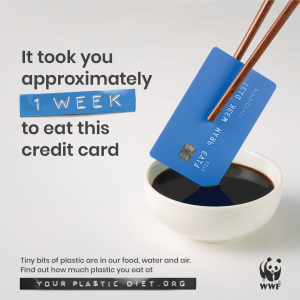From the Cover Story of Consumer Reports Magazine, Volume 85, Number 6, June 2020, pp. 26 – 35.
The first company to ever sell fully synthetic plastic—the Bakelite Corp., established in 1922—advertised it as “The Material of a Thousand Uses.”
It had that right: Today, beyond the plates we eat from, the straws we drink through, the furniture we sit on, and the toys our kids play with, there is plastic in the clothes we wear, in the cars we drive, even in the lifesaving medical equipment in our hospitals. And—more than anywhere else—plastic is in our packaging, encasing everything from laundry detergent to prescription pills, from the food we eat to the beverages we drink.
In fact, the world has produced more than 10 billion tons of the stuff, mostly since the 1950s, and we just keep making more. In 2018, manufacturers created almost 400 million tons of new plastic, and production is expected to almost quadruple by 2050. The vast majority of that plastic eventually ends up piled up around the planet. Some of it may last for hundreds of years, and when it does break down, it can become small particles of plastic—microplastics—that spread farther across the planet, entering our water and food supply.
Why is this a problem? After all, manufacturers and certain regulatory agencies have long assured us that plastics are safe for human health. “In the U.S., we have a robust system that looks at materials that are in contact with food, and that includes plastics, managed by the [Food and Drug Administration],” says Karyn Schmidt, senior director of regulatory and technical affairs at the American Chemistry Council, an industry group that represents plastics and chemical manufacturers. “Consumers should feel very confident using any plastic coming into contact with food that they would buy in a grocery store.”
MORE ON ENVIRONMENTAL HEALTH
And yet there’s growing concern. It’s not just the photos of whales, albatrosses, and sea turtles washing ashore, stomachs clogged with the stuff, or the stories about swirling ocean vortexes collecting litter from around the globe—although these are sobering. Reliable research now shows that tiny bits of plastic are in our food, drinking water, the air we breathe, and, yes, inside our bodies.
“This credit card here, this is how much plastic you are consuming every week,” Sen. Tom Udall, D-N.M., holding up a Visa card, said when announcing legislation meant to reduce plastic pollution this past February. He was referencing a preliminary estimate by some scientists that the plastic the average person may be eating and drinking totals as much as 5 grams per week. One research review published in 2019 calculated that the average American eats, drinks, and breathes in more than 74,000 microplastic particles every year.
Some scientists say it’s likely that ingesting these tiny bits of plastic could expose us to harmful chemicals. “There cannot be no effect,” says Pete Myers, Ph.D., founder and chief scientist of the nonprofit Environmental Health Sciences and an adjunct professor of chemistry at Carnegie Mellon University in Pittsburgh.
“People have this idea that plastic is clean,” a sterile object that doesn’t come apart, says Sherri Mason, Ph.D., sustainability coordinator at Penn State Behrend in Erie, Pa., and a chemist who has studied the presence of plastic in tap water, beer, sea salt, and bottled water.
But, in fact, the raw materials of plastic are created from fossil fuels including oil and natural gas. And thousands of chemicals, depending on the product, are used to make it harder, softer, or more flexible. These chemicals include bisphenols, such as bisphenol A (BPA), and phthalates, which can flow or leach into the foods touched by plastic, especially when that plastic is warmed.
“It’s ironic that as public attention to this issue is really growing, global plastic production is increasing,” says Judith Enck, a former regional administrator for the Environmental Protection Agency, now a visiting professor at Bennington College in Vermont and president of Beyond Plastics, a nonprofit focused on ending plastics pollution. And as more plastic is produced and discarded, contaminating our water, food, and air, exposure levels for the average person will continue to rise.
Shopping bags disintegrate into microplastics, potentially entering our food supply and, eventually, our bodies. (To be continued.)
############################
See also: Scientists Discover Highest Concentration of Deep-Sea Microplastics to Date, Olivia Rosane, EcoWatch.com, May 01, 2020
Scientists have discovered the highest concentration of microplastics ever recorded on the seafloor—1.9 million pieces in one square meter (approximately 11 square feet) of the Mediterranean.
But the finding, published in Science on Thursday, suggests a much broader problem as deep-sea currents carry plastics to microplastic “hotspots” that may well also be deep-sea ecosystems rich in biodiversity. For study coauthor professor Elda Miramontes of the University of Bremen, Germany, the results are alarming.

